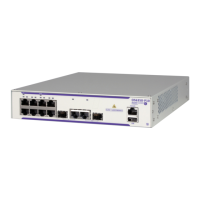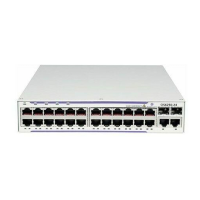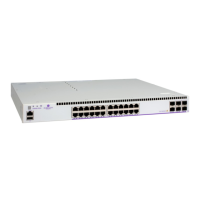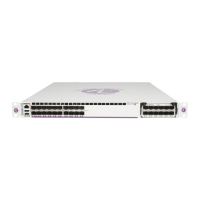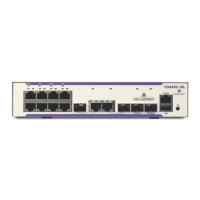Configuring Dynamic Link Aggregation Configuring Dynamic Link Aggregate Groups
OmniSwitch AOS Release 8 Network Configuration Guide December 2017 page 9-7
Relationship to Other Features
Link aggregation groups are supported by other switch software features. For example, you can configure
802.1Q tagging on link aggregation groups in addition to configuring it on individual ports. The following
features have CLI commands or command parameters that support link aggregation:
• VLANs. For more information on VLANs, see Chapter 4, “Configuring VLANs.”
• 802.1Q. For more information on configuring and monitoring 802.1Q, see Chapter 4, “Configuring
VLANs.”
• Spanning Tree. For more information on Spanning Tree, see Chapter 6, “Configuring Spanning Tree
Parameters.”
Configuring Dynamic Link Aggregate Groups
This section describes how to use Command Line Interface (CLI) commands to create, modify, and delete
dynamic aggregate groups. See “Configuring Mandatory Dynamic Link Aggregate Parameters” on
page 9-8 for more information.
The OmniSwitch implementation of link aggregation software is preconfigured with the default values for
dynamic aggregate groups and ports shown in the table in “Dynamic Link Aggregation Default Values”
on page 9-2. For most configurations, using only the steps described in “Creating and Deleting a Dynamic
Aggregate Group” on page 9-8 is necessary to configure a dynamic link aggregate group. However, if you
need to modify any of the parameters listed in the table on page 9-2, please see “Modifying Dynamic Link
Aggregate Group Parameters” on page 9-11 for more information.
Note. See “Application Examples” on page 9-25 for tutorials on using link aggregation with other features.
Note. See “Quick Steps for Configuring Dynamic Link Aggregation” on page 9-3 for a brief tutorial on
configuring these mandatory parameters.
Note. See the “Link Aggregation Commands” chapter in the OmniSwitch AOS Release 8 CLI Reference
Guide for complete documentation of show commands for link aggregation.

